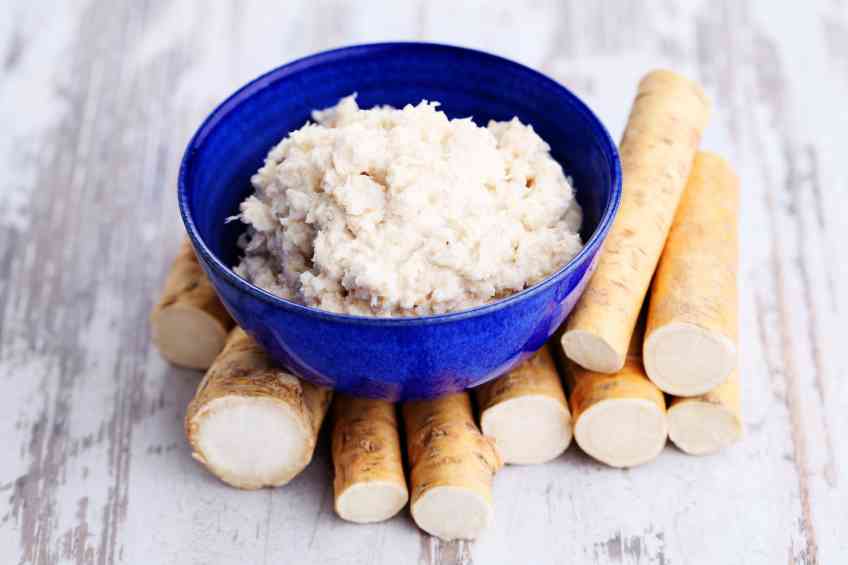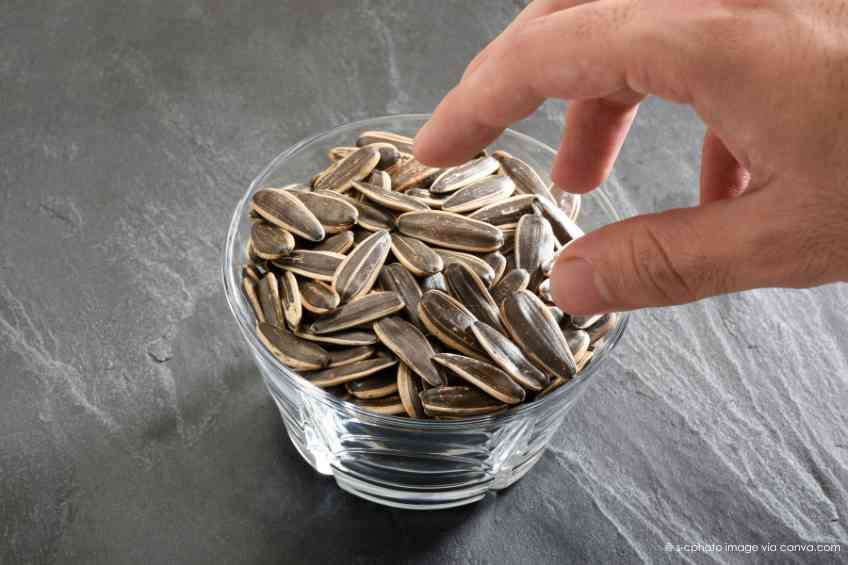The Skinny:
In case anyone was wondering, horseradish is a radish that boasts a long, white root. More importantly, chopped or shredded radish helps make a spicy treat prized for its culinary versatility. What most don’t realize is that horseradish is more than tasty. It can be good for what ails people, which the ancient Greeks and the Egyptians believed. They used the radish for medicinal purposes, and an aphrodisiac Rumor has it that the Delphic Oracle thought horseradish was worth its weight in gold. Who knows. What is certain is that it is something of a spicy elixir, which WellWell helps define here. Read on for more on the health benefits of horseradish.
The Slate:
Nutrient Cornucopia
A tablespoon of horseradish has more nutrients than many other foods do. This low-calorie, low-fat radish has calcium, phosphorus and potassium. Just 15 grams of horseradish has a scant 7.2 calories and 0.103 grams of fat while delivering 63 milligrams of sodium, 1.7 grams of carbohydrates, 0.495 grams of fiber, 1.2 grams of sugars, 0.177 grams of protein, 8.4 milligrams of calcium, 4 milligrams of magnesium, 4.65 milligrams of phosphorus, 36.9 milligrams of potassium and 3.75 milligrams of vitamin C.
Pound Puncher
Thanks to its spicy disposition, a little horseradish goes a long way, which allows a relatively small amount of this low-calorie, high-fiber treat to add tons of flavor to recipes. Ultimately, this makes it calorie friendly compared to many other rich salad dressings and sauces. The weight-saving benefits don’t end there. Horseradish contains glucosinolates, which can speed up a person’s metabolism, assisting in weight loss. Since it has sinigrin, a glycoside, horseradish also fights water retention.
Battles Cancer
The glucosinolates in horseradish detoxify carcinogens in the liver, which can help retard tumors. It also holds the enzyme peroxidase and, as noted, sinigrin. Peroxidase can eliminate cancer cells, while sinigrin is an antioxidant that fights the cancer-inducing impact of free radicals.
May Thwart Urinary Tract Infections
In Germany, horseradish has approval to treat these infections thanks to the glucosinolates, gluconasturtiin and sinigrin it holds. All three may be able to kill off E. coli bacteria that cause urinary tract infections.
Away With Mucus
Sure, getting too close to horseradish can lead to runny noses. But this can be a good thing for those suffering from stuffed-up sinuses and noses. Horseradish generates clearing power when chopped up or chewed because it releases allyl isothiocyanate, a sulfur compound. The compound generates a neurological response that increases facial circulation and sinus drainage. Okay, maybe it’s not pleasant, but it is effective.
Skin Magic
Forget munching on horseradish for a minute. For centuries, people used slices of radish for a facials. A folk remedy for ditching age spots, weekly horseradish facials are reputed to be able to eliminate these spots. Horseradish slices rubbed on the spots work, or apply a facial mask made of horseradish juice, powder, and sour cream or vinegar. Make sure to wash thoroughly after these hour-hour treatments.
Words Of Caution
For all its benefits, eating too much horseradish or getting it into the wrong spots can create problems. Freshly cut horseradish can irritate the eyes. Gobbling too much can lead to other problems, including sweating, nausea and disorientation. Those suffering from hypothyroidism, ulcers, gastritis or kidney disease should only consume it in moderation. Ditto for anyone pregnant or breastfeeding.
Eyes Up:
Are you a horseradish lover? Let us know at info@wellwellusa.com.
WellWell editors independently identify services and products of interest. If readers purchase anything through the associated links, WellWell may earn a commission, which goes to support our work. Learn More.













